Sourdough Egg Bagel Recipe
This post may contain affiliate links.
Sourdough egg bagels are enriched with eggs and deliver a unique flavor and texture - yet still with that famous chewy bagel crust we've come to love!
You can eat sourdough egg bagels exactly like you'd eat regular, lean bagels. Sourdough egg bagels have a beautiful shine to their crust thanks to an egg wash prior to baking.
You can top them with pretty much anything you can think of! I love adding an egg wash for that rich shine and then sprinkling with poppy seeds.
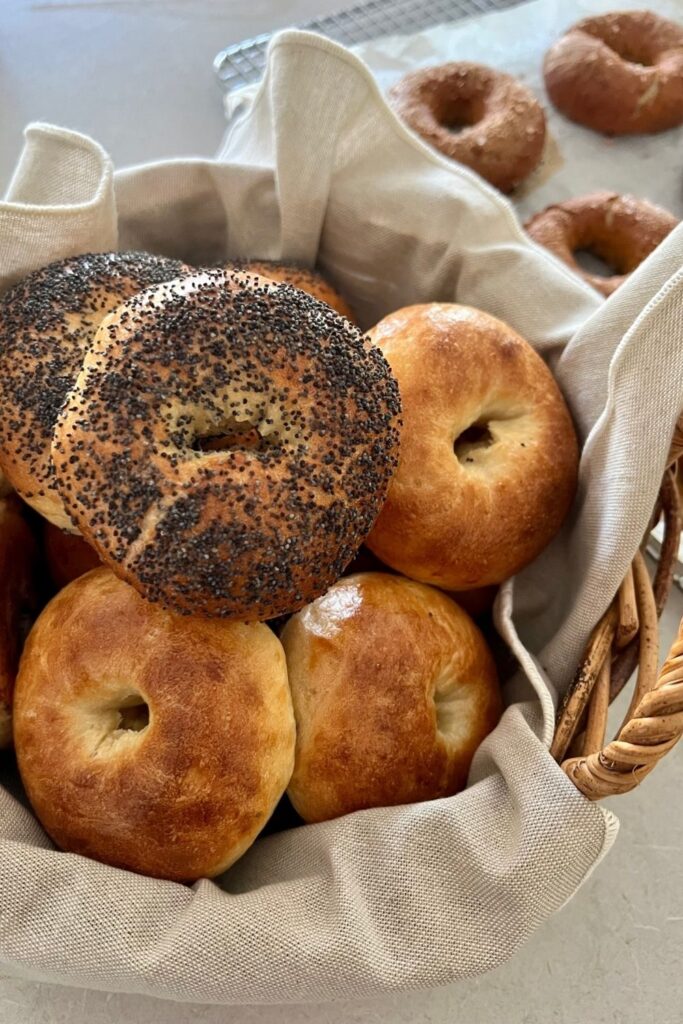
How Are Egg Bagels Different to Sourdough Bagels?
These sourdough egg bagels are enriched with the protein of egg.
Regular sourdough bagels are made using a lean dough, meaning that they contain no real fats or oils.
This sourdough egg bagel recipe uses eggs to add protein and fat to the bagel dough which results in a more tender crumb.
The other difference from regular bagels is that egg bagels are richer in color - a direct result from using eggs.
They also have a unique shine to the crust from the egg wash applied right before baking.
If you enjoy trying different bagel recipes, you might also like these sourdough pumpkin bagels.

How To Make This Sourdough Egg Bagel Recipe
This sourdough egg bagel recipe is made much like regular bagels in that you mix together a fairly stiff dough, allow it to rise and then boil the bagels before baking.
These sourdough egg bagels also feature an egg wash to give that gorgeous shine to the chewy crust.
It's best to knead the dough in a stand mixer, however if you don't have one, you can knead by hand. It is a stiff dough so it will take a little bit of work to get it kneaded.
Here's how to make Sourdough Egg Bagels:
- Add sourdough starter, water, flour, egg, honey and salt to the bowl of your stand mixer and bring together to form a shaggy dough.
- Allow the dough to rest for around 15 minutes.
- Using the dough hook of your stand mixer, knead the dough for around 10 minutes until it is smooth and supple. The lowest setting is best, but depending on your mixer, you may need it to go a little faster to deal with the stiff dough.
- Once the dough is sufficiently kneaded, you'll need to allow it to rise or ferment.You want the dough to double and be puffy and soft.
- Once the dough has risen, you'll need to shape the bagels. It's quite simple, you just need a little patience.Divide the dough into 12 pieces weighing 80g each. Shape each piece of dough into a small ball.
- Take each ball and poke a hole in the middle. Gently stretch the hole out and then place each bagel on a sheet of baking paper to rise.
- Cover the bagels with a dish cloth and allow them become lovely and puffy.
- While they are puffing up, bring a pot of water with 40g of honey added to the boil and preheat your oven to 200C/392F.
- When the water is boiling, carefully place 3-4 bagels into the boiling water at a time. You want to boil them for around 30 seconds each.
- Carefully remove the bagels from the boiling water using a slotted spoon.Place them onto a baking tray lined with parchment paper and gently brush them with egg wash. Sprinkle with poppy seeds if desired.
- Bake the bagels for around 20 - 25 minutes at 200C/392F. Remove them from the oven when they are golden brown.
- Allow them to cool before you enjoy them!

I've created a sourdough baking timeline for bagels here - you can use this same timeline for sourdough egg bagels.
Why Boil Sourdough Egg Bagels
These sourdough egg bagels are boiled in water with honey added.
Boiling the egg bagels before baking them allows them to puff up so that they are already partly cooked when they hit the oven.
The crust becomes chewy from the boiling process and is helped along by the steam created from the water left on the dough after boiling.
It's normal for the bagels to look a bit lumpy and bumpy after boiling.
You can read more about boiling sourdough bagels here.
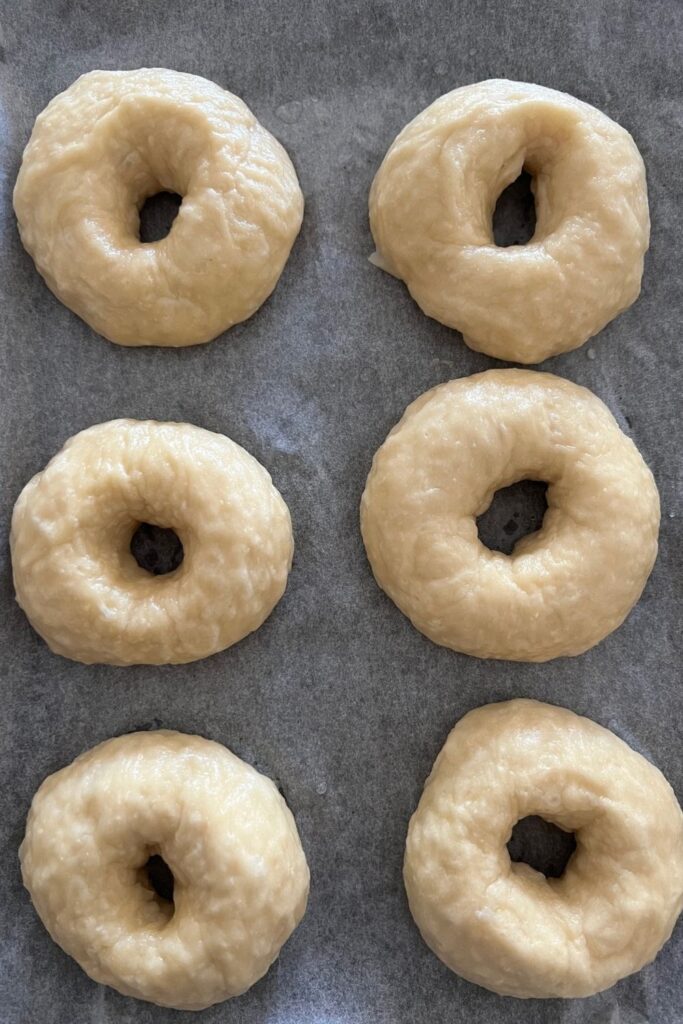
Should You Use Vital Wheat Gluten in Sourdough Egg Bagels?
If you are concerned with the texture of your sourdough egg bagels being too "light" you can add some vital wheat gluten to increase that toothy chew.
I recommend adding no more than 10g of Vital Wheat Gluten to your dough (you can add it along with the regular bread flour).
Vital Wheat Gluten can also help with the dough if you are worried it will be too soft with the eggs added. The increased gluten can help the egg bagels to hold their shape.
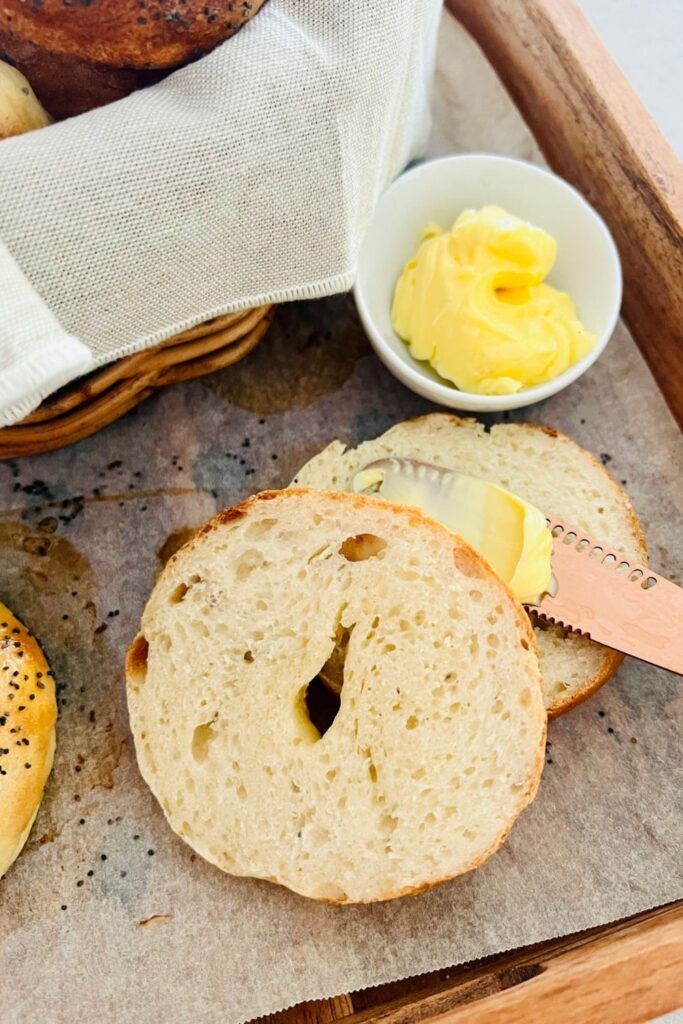
How To Serve Sourdough Egg Bagels
These bagels are so versatile. You can use them however you use any other type of bagel. But in case you need some inspiration, here's how we use them in our home:
- They make amazing burger buns (ask my husband lol) - especially when you dip them in this homemade Everything Bagel seasoning!
- Fill them with bacon, egg, sliced cheese and your fave sauce for a quick, easy breakfast.
- Toast them and smear with peanut butter and jelly.
- Fill with ham, swiss cheese and mustard for a snack on the go!
Storing & Freezing
These bagels are best eaten within 12 hours of baking.
If you wish to store them, I suggest freezing them. Once cool, place them into a ziploc bag and freeze. You can then just take a few out as you need them.
Allow them to defrost on the counter before slicing and eating.
Frequently Asked Questions
Egg bagels are a deeper yellow color due to the protein in the eggs. Depending on the color of the yolks you use, you'll see a light yellow through to an almost orange color. Adding egg yolks only (no white) will also increase the color density.
Yes this recipe is suited to adding in some whole wheat flour. You could swap up to 250g of bread flour for whole wheat flour. If you are using whole wheat flour, I would recommend considering the use of Vital Wheat Gluten.
No you don't have to egg wash the bagels prior to baking, however it does give them a lovely shine. You could just use egg white if you'd prefer or leave the egg wash out completely.
Absolutely you can use sourdough discard instead of active starter in this sourdough egg bagel recipe. My suggestion is to add up to 7g of commercial yeast if you are going to use sourdough discard. This will help them to rise in the case that your discard is not quite up to speed. The rising time will be much shorter if you do this.
Want More Recipes?
If you are loving this sourdough egg bagel recipe, you might also enjoy these:


Sourdough Egg Bagel Recipe
Equipment
- Stand Mixer recommended
- Baking Trays
- Stock Pot for boiling bagels
- Slotted Spoon
Ingredients
- 100 g Sourdough Starter fed and bubbly
- 500 g Bread Flour
- 1 Egg yolk + white
- 2 Egg Yolks
- 150 g Water Warm
- 30 g Honey Can sub with sugar
- 10 g Salt
For Boiling
- 2 Litres Water
- 40 g Honey
For Topping
- 1 Egg plus 20g of water for egg wash
- 50 g Poppy Seeds optional
Instructions
- I recommend using a stand mixer for this recipe as it is a stiff dough and can easily be kneaded in a stand mixer.Add sourdough starter, water, flour, eggs, honey and salt to the bowl of your stand mixer and bring together to form a shaggy dough.
- Allow the dough to rest for around 15 minutes.
- Knead the dough (you'll need to use a dough hook for stand mixers) for around 10 minutes until it is smooth and supple. This is a stiff dough (much like sandwich bread dough) so it won't be super elastic, however it should be smooth and not too sticky (see notes below).
- Once the dough is sufficiently kneaded, you'll need to allow it to rise or ferment.You want the dough to double and be puffy and soft. Remember that this dough is enriched with eggs and depending on the temperature of your home, it could take several hours for it to finish bulk fermentation.

- Once the dough has risen, you'll need to shape the bagels. It's quite simple, you just need a little patience.Divide the dough into 12 pieces weighing 80g each. Shape each piece of dough into a small ball.

- Take each ball and poke a hole in the middle. Gently stretch the hole out and then place each bagel on a sheet of baking paper to rise.

- Cover the bagels with a dish cloth and allow them become lovely and puffy.
- While they are puffing up, bring a pot of water with 40g of honey added to the boil and preheat your oven to 200C/392F.
- When the water is boiling, carefully place 3-4 bagels into the boiling water at a time. You want to boil them for around 30 seconds each. They should float to the surface and that's when you know to take them out.If you prefer really chewy bagels, boil them for up to 2 minutes each.

- Carefully remove the bagels from the boiling water using a slotted spoon.Place them onto a baking tray lined with parchment paper and gently brush them with egg wash. Sprinkle with poppy seeds if desired.You can leave them plain if you wish.

- Bake the bagels for around 20 - 25 minutes at 200C/392F. Remove them from the oven when they are golden brown.
- Allow them to cool before you enjoy them!








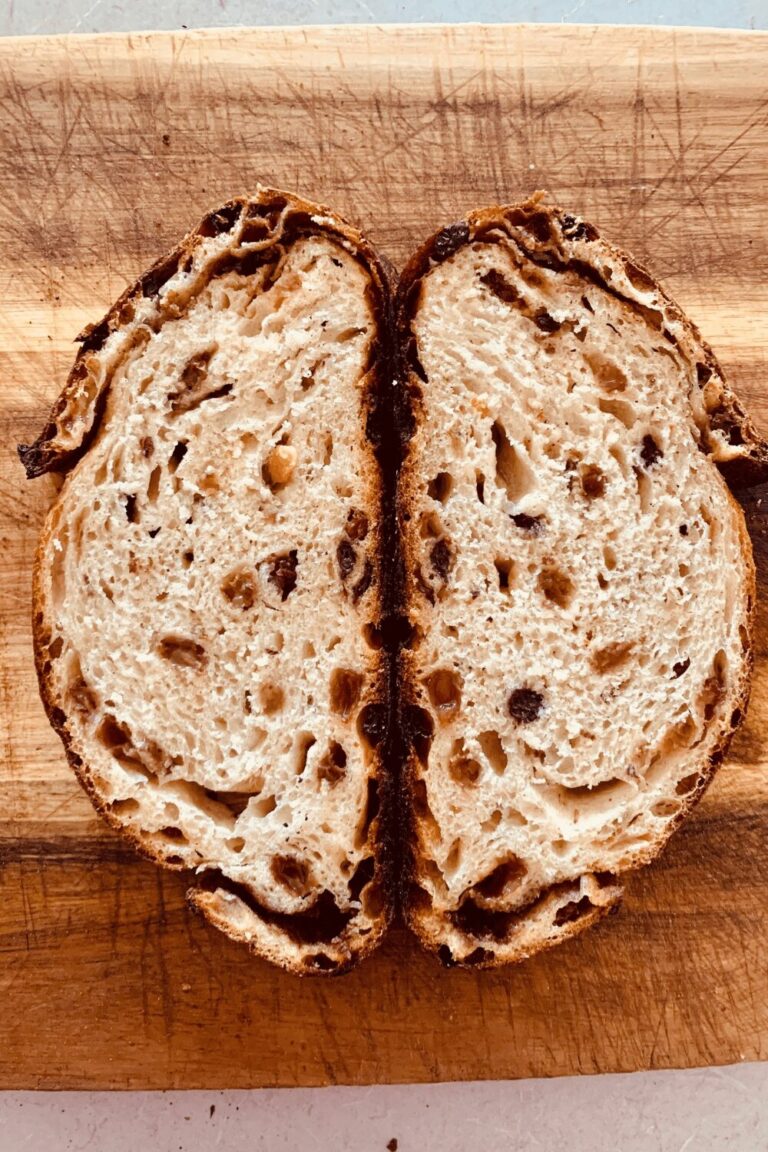

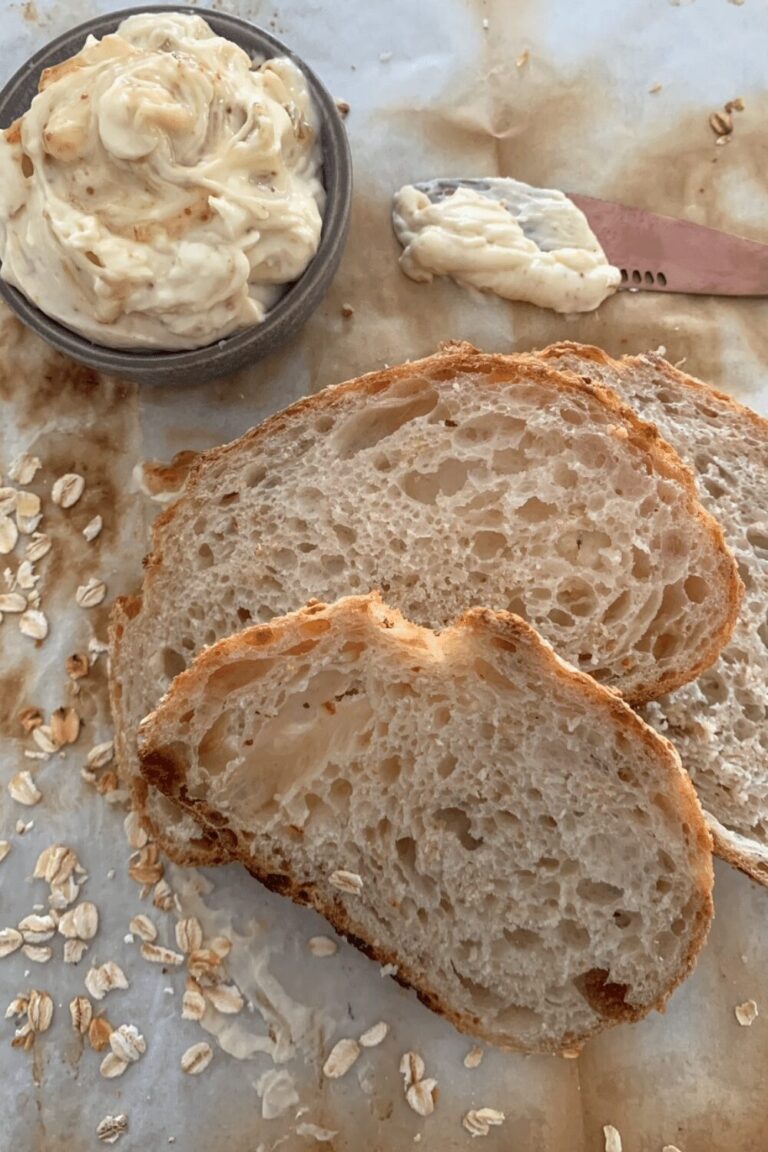


My house is running 70 deg at night, maybe high 60s in the wee hrs. Should I be concerned about the egg? Maybe I should stick to the reg bagel recipe until my nights are cooler? Or ferment in the fridge?
Have you ever made this recipe overnight? You didn’t mention an approximate rise time so I was wondering if I can prepare the dough in the evening, let it rise overnight and make them in the morning. Thank you for your time.
i made this recipe last weekend, and they turned out AMAZING. the recipe is so easy to follow, my bagels looked exactly like the picture. thank you !!
I love this recipe and have made it several times. But for me, it always makes 5 normal sized bagels. Are your 12 bagels mini? In your pics they appear pretty large.
This is my favorite go to bagel recipe. I've made them several times in a stand mixer and just last night, I kneaded the dough by hand. Both ways make amazing bagels. My family loves them.
Perfect! After bulk fermentation I shaped, covered for 1 hour and placed in refrig over night. In the morning boiled and baked-delish!!
These turned out just like the NY style bagels I love.
Hi! Wondering if I could substitute the water or even just half of the water with yogurt whey 🙂
Yes you can do this 🙂
Such an awesome bagel recipe!!!
Made 8 bagels, instead of 12
We ate them so fast I made a second time today.
Both times it took 7 hours to rise and get fluffy.
Oh So GOOD!!